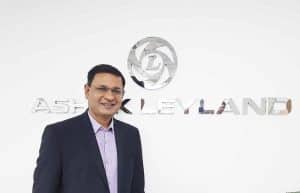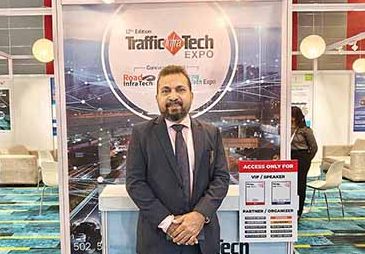In an exclusive Industry Talk session, Rajesh R, Vice President of Defence and Power Solution Business, Ashok Leyland Ltd. spoke to Prateek Pardeshi on CEV engines taking a cleaner route.
Q. What is the ideology behind introducing CNG in CEVs?
A. For the automotive industry, CNG already exists in our portfolio. However, for the CEV segment, I do agree it’s a new concept. We believe the migration will happen much faster than expected.
Q. Could you highlight the differentiators of CNG CEVs?
A. Ashok Leyland has been a prominent player in the Automotive segment. The industry has been occupied with diesel-powered engines for a long time. We want to be a pioneer in the CNG automotive segment and leverage the learnings from the automotive segment for the CE segment. CNG may not be used in some industrial applications, for example, the portable compressors per se as the latter can work on natural gas. In the terms of efficiency of the platform, CNG has a better TCO and better reliability. Speaking overall, it’d be a win-win for the customer. Looking at the long term prospects of the CNG migration, the customer will still have the option to choose between diesel and CNG.
Q. Is there a void in CNG infrastructure that needs to be addressed?
A. I don’t think there are availability constraints in the case of CNG. More and more mines already have diesel storage, and similarly, the CNG filling stations can also be a possibility for them.
Q. Is the new H-series CEV CNG engine the same as on the Ecomet CNG? How does the emission compliance vary?
A. It is not a one-on-one match as the power and torque of CEVs as we know is more as compared to commercial vehicles. But yes, the base platform remains the same. Also, as of today, there are no emission compliance requirements for CEV CNG engines.
Q. How promising are the export opportunities in the CEV segment?
A. Exports is a different ball game altogether, nevertheless, we would like to look at options where more company’s set shop in India. They also export some of the equipment built in India. As our country is considered a manufacturing hub for most of the companies and the whole equipment is exported to neighbouring markets, we see an opportunity to partner with them on a case-to-case basis. We are also looking at a self-service model that will take care of the requirements in those specific projects.
Q. What are the recent developments in the Defence segment?
A. We already have the Stallion which has come a long way from 4×4 to 6×6, and now in the Super Stallion, we have brought in the 12×12 combination. We are now looking at developing smaller platforms to cater to the automotive requirements as it’s a large volume game. We don’t want to stop at soft cabs. We also want to develop armoured cabs in line with the light, bulletproof vehicles segment.
Q. Is an electric Dost on the cards?
A. I think it’s already in the pipeline. My team from Switch Mobility is already working on it.
Q. How are you tackling the supply-chain bottlenecks?
A. It’s a global shortage, for instance, semiconductors and everyone is facing this issue. But we are trying to build alternates. In effect, it is an alternative chip that we are talking about. We are working closely with the manufacturers on how we can migrate, from being a one complete chip dependency to another design as an alternative.










Leave a Reply